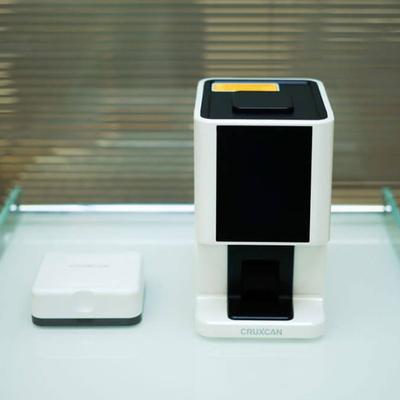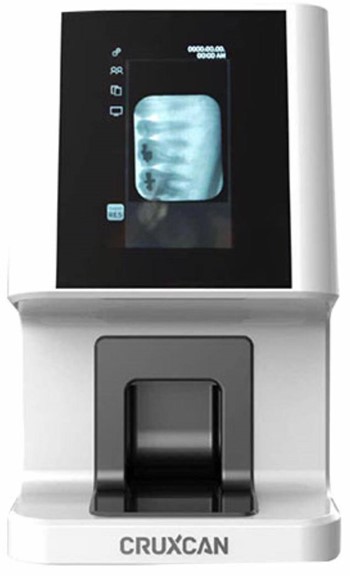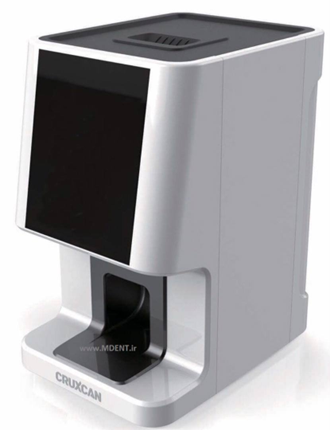What is a Phosphor Plate?
Have you ever wondered what a phosphor plate is and what benefits it has? In recent years, many devices have entered the market, and the phosphor plate device has carved a special place for itself in the world of dentistry. The phosphor plate is similar to old-fashioned, regular film in that it has comparable size, thickness, and even light sensitivity. The only difference that sets the phosphor plate device apart from others is the use of a sensor instead of film in this device.

The phosphor plate scanner sensors are wireless, and by placing them inside the mouth, after capturing the image, instead of using traditional methods where photos were developed in a darkroom with chemicals, the phosphor plate works by exposing the phosphor crystals to X-rays. The images are stored in the phosphor crystals and then read by a laser scanner. These images are then converted into digital images for diagnostic purposes. Once the images are converted into digital format, they are stored on a system where the plates are placed, allowing the dentist to easily access the patient’s history whenever needed.

X-ray sensors in sizes 1 and 2 can be installed on a computer, but size 1 is typically the most commonly used. On the other hand, phosphor plate sensors come in 5 distinct sizes, allowing simultaneous use of all of them. By purchasing one device, you gain access to all five sizes, which helps save costs.
Although both devices consider patient comfort, the wireless nature of phosphor plate sensors makes them more suitable for use. Their thin and delicate design allows them to be easily placed in the patient’s mouth without causing discomfort, unlike wired X-ray sensors, which are thicker and can cause discomfort during imaging. For molar teeth, it’s better to use an advanced device like the phosphor plate. The phosphor plate X-ray system has built-in memory where all images are stored, ensuring you always have access to them. In contrast, with the X-ray, you need to transfer the device to a scanner or computer.
Another difference is the active area of the sensors. In phosphor plates, 100% of the active area is functional, allowing for image capture across the entire sensor surface. However, X-ray sensors have only 35-40% of the active area, making them less efficient at capturing images. X-rays may be a better investment in terms of initial cost, but phosphor plates offer greater efficiency and flexibility.
The difference between X-ray imaging and phosphor plate imaging is significant. The main difference lies in the type of imaging technology used. Phosphor plates capture images indirectly, while X-rays capture images directly. Phosphor plate scanners are completely wireless and thin, providing a more comfortable experience for the patient. X-rays, on the other hand, capture images more quickly, with image display time typically under three seconds, while phosphor plates take a bit more time to capture images.
When it comes to maintenance, X-ray devices are more costly to repair, making them less economically viable in the long run. In contrast, phosphor plate systems are more cost-effective to maintain and repair, which could be one of the key advantages of using them. Additionally, the sensors in X-ray devices are thicker than those in phosphor plates, which can make X-ray devices less comfortable for the patient during imaging.

